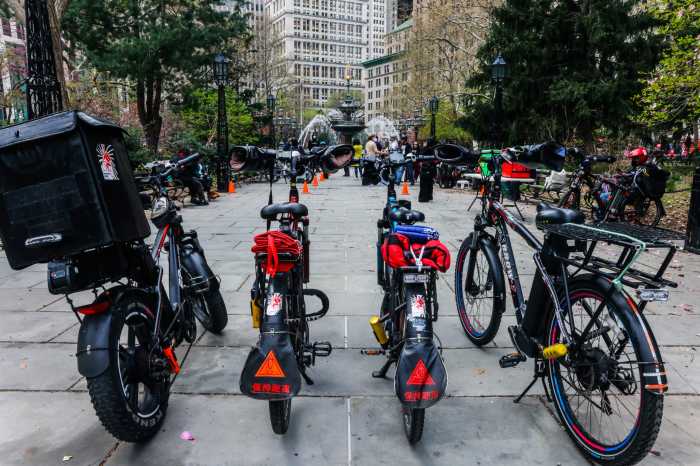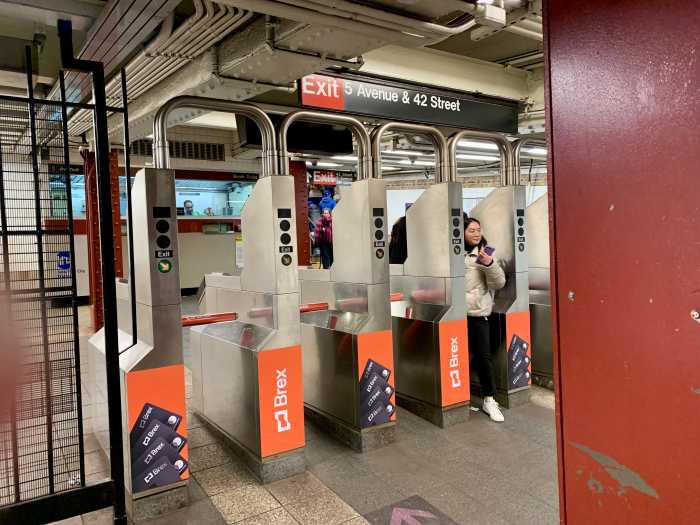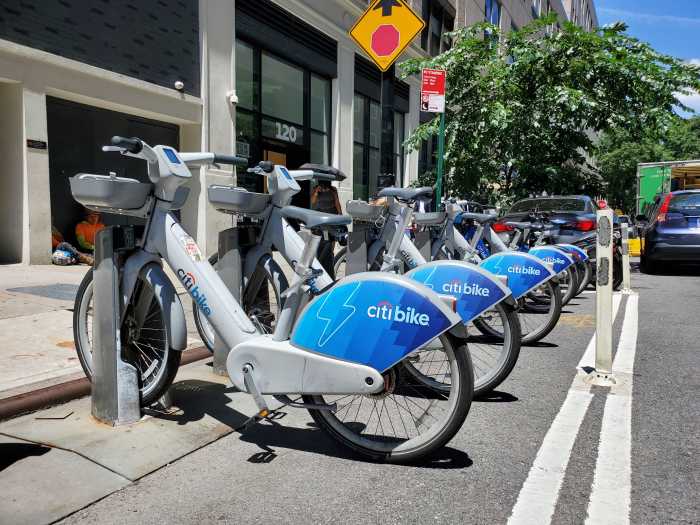Transit riders rely on it, communities demand it and celebrities love it.
But as Citi Bike approaches its anniversary in May, the bike share program is pedaling uphill. It is losing money, seeking millions from investors and in need of more riders — particularly tourists — using daily and weekly passes, where the real money is.
Further, its original technology and equipment provider is in bankruptcy and NYC Bike Share’s general manager resigned last month.
Transportation and bicycling experts said NYC Bike Share — the subsidiary of Oregon-based Alta that manages Citi Bike — can ride out its growing pains, however.
Possible solutions include a change in rates and soliciting more corporate sponsors. And while city officials are applying the brakes on using taxpayer money, advocates and lawmakers said a bike share system is a public good deserving of public funds.
For now, Alta is trying to get $20 million to expand the system to 600 stations and 10,000 bikes.
Department of Transportation Commissioner Polly Trottenberg said she expects NYC Bike Share to resolve its issues by improving software and making sure docks have a proper balance between bikes and spaces.
“Everything is under consideration, from improving operations to new sponsorships to additional financing,” Trottenberg said in a statement.
Despite these road blocks, Citi Bike will remain part of the streetscape as New Yorkers clamor for more locations outside of Manhattan’s central business area and the Brooklyn waterfront, where most are located.
“I believe it’ll be expanded. It’s wildly popular,” said Sarah Kaufman, an adjunct assistant professor of planning at NYU Rudin Center for Transportation. She added that Citi Bike’s perceived problems are “only the fault of its success.”
Below are some ideas for fixing the program from experts in transportation and bike share programs.
RAISE FEES
One suggestion for boosting Citi Bike revenue is an increase in membership fees. Ryan Rzepecki, CEO of Social Bicycles, said NYC Bike Share should be allowed to play with prices, noting that a ride could come with a small fee, instead of being offered for free with a membership.
“I don’t think the user numbers would suffer too badly and all of a sudden, the system goes [from] losing a bunch of money to breaking even or making money,” he said. “There needs to be some ability to explore with different pricing models and get trips to generate some sort of revenue.”
Currently, it costs $95 for an annual membership with unlimited 45-minute rides. Day passes cost $10 and weeklong passes are $25 for unlimited 30-minute rides.
“Annual memberships seem to be undervalued even at nearly $100 per year,” Susan Shaheen, co-director of UC Berkeley Transportation Sustainability Research Center, said in an email. “Raising prices is feasible.”
TAPPING INTO TOURISTS
Citi Bike has been a hit with New Yorkers, with annual membership topping 100,000 since its May 31 launch, but it has had less success attracting casual riders compared to other cities’ systems.
“Increasing that user type could greatly benefit the system,” Shaheen said. She, like other transportation experts, noted the system is not even a year old and has endured a particularly brutal winter.
NYC Bike Share spokeswoman Dani Simons said in a statement that sales of casual passes are starting to climb as the weather gets warm.
Aside from tweaking the price structure, another barrier to encouraging use among visitors is the system’s technology, which has led to problems with docking and credit card transactions. NYC Bike Share’s technology could improve now that Alta has partnered with 8D, the company behind successful bike shares in Washington, D.C., Boston and London. Alta’s first technology and equipment provider is now bankrupt and up for sale.
PUBLIC MONEY
With Citi Bike a popular option for transit riders to complete their trips, supporters suggest using public money like other bike share systems so the program can expand into new neighborhoods, especially those where transit options are lacking.
“If you look at who’s using Citi Bike, it’s not the tourists, it’s New Yorkers who are going to work, who are using it to complement the existing mass transportation system,” said Ken Podziba, CEO of Bike New York, a nonprofit group. “It’s a public-private partnership but the public’s not stepping up.”
Mayor Bill de Blasio last month said there are no plans to use city money to help the program.
When asked about using city money to expand the system at a March City Council hearing, DOT Commissioner Trottenberg replied, “We’re not there yet.”
“We need to make sure that the current system is stable and has a good viable operation,” she said.
SPONSORSHIP
Citibank paid $41 million to get its logo and cobalt-blue brand color emblazoned on the bike share system for five years. But NYC Bike Share’s financial situation has led the company to search for more sponsors.
What that will look like to riders remains to be seen.
“You certainly can do the silent endorser that funds it and it might be in some of the PR material but the ones that are more visible to the user, they’re going to get the bigger bang,” said Russ Napolitano, chief operating officer of CoreBrand, a consulting firm.
Getting another company’s logo in front of the faces of riders could mean co-branding alongside Citibank, said Professor John Fortunato of the Gabelli School of Business at Fordham University.
“If the brand’s not being noticed, why would the company sponsor it? That’s got to be part of it,” he said.
Professor David Luna of Baruch College’s Zicklin School of Business said NYC Bike Share could get their logos on different parts of the system, like station docks. He also suggested that corporations could get their products exclusively associated with bike share.
“It would be hard from a branding perspective, because, going back to the iconography of the whole experience — it’s blue, it’s ‘Citi Bike’ with an ‘i,’ ” he said. “But definitely, you could somehow differentiate different parts of the experience and brand them separately.”




































